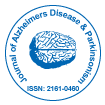开放获取期刊获得更多读者和引用
700 种期刊 和 15,000,000 名读者 每份期刊 获得 25,000 多名读者
索引于
- 哥白尼索引
- 谷歌学术
- 夏尔巴·罗密欧
- 打开 J 门
- Genamics 期刊搜索
- 学术钥匙
- 期刊目录
- 中国知网(CNKI)
- 电子期刊图书馆
- 参考搜索
- 哈姆达大学
- 亚利桑那州EBSCO
- OCLC-世界猫
- SWB 在线目录
- 虚拟生物学图书馆 (vifabio)
- 普布隆斯
- 日内瓦医学教育与研究基金会
- 欧洲酒吧
- ICMJE
有用的链接
开放获取期刊
分享此页面
抽象的
The Potential of CRISPR/Cas9 Gene Editing as a Treatment Strategy for Alzheimer's Disease
Troy T Rohn*, Nayoung Kim, Noail F Isho and Jacob M Mack
Despite a wealth of knowledge gained in the past three decades concerning the molecular underpinnings of Alzheimer’s disease (AD), progress towards obtaining effective, disease modifying therapies has proven to be challenging. In this manner, numerous clinical trials targeting the production, aggregation, and toxicity of betaamyloid, have failed to meet efficacy standards. This puts into question the beta-amyloid hypothesis and suggests that additional treatment strategies should be explored. The recent emergence of CRISPR/Cas9 gene editing as a relatively straightforward, inexpensive, and precise system has led to an increased interest of applying this technique in AD. CRISPR/Cas9 gene editing can be used as a direct treatment approach or to help establish better animal models that more faithfully mimic human neurodegenerative diseases. In this manner, this technique has already shown promise in other neurological disorders, such as Huntington’s disease. The purpose of this review is to examine the potential utility of CRISPR/Cas9 as a treatment option for AD by targeting specific genes including those that cause early-onset AD, as well as those that are significant risk factors for late-onset AD such as the apolipoprotein E4 (APOE4) gene.

 English
English  Spanish
Spanish  Russian
Russian  German
German  French
French  Japanese
Japanese  Portuguese
Portuguese  Hindi
Hindi